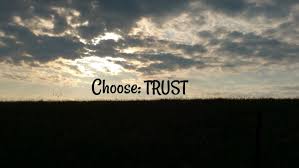
“The best way to find out if you can trust somebody is to trust them”
This is the title I gave to a recent post in which I referenced three leadership examples, including a quote from James Timpson of the family-owned UK firm of the same name:
“The easiest way to create a culture of kindness in an organisation is to trust everyone to do what they think is right…every time a decision needs to be made.”
Today I thank Dom Monkhouse for sharing on LI an HBR article on PWC on flexible working, to which he adds his thoughts:
“A good article showing flexibility can work in a big firm. Trust shouldn’t need to be earned. It should be assumed everyone is trusted from the outset.”
The article in question from HBR is called: “What PwC Learned from Its Policy of Flexible Work for Everyone“, from which I clip this piece:
When it comes to flexibility, trust is not earned. It is not uncommon for managers to tell me that they believe in allowing employees to work flexibly, if and only when they’ve been with the firm a certain amount of time and earned that trust. This is when I remind people that we place our trust in employees from the moment they start working for us, so why wouldn’t that same theory apply when it comes to flexibility? If you trust an individual enough that you hired them to join your organization, you also should trust them to get the work done when and where they prefer, as long as they meet deadlines. I challenge all managers to take this approach.
The whole HBR piece is worth reading and it does show admirable leadership from PWC in the area of trust and flexible working.
At the same time, it also indicates to me how hard it can be for large organisations to change.
I’ve worked over the years with organisations of varying sizes and types around the world to apply a change model I now have evolved to call “Cascading Leadership” (see my recent post explaining this here). One element that is key to this is, as with the examples already noted today, trust.
Trust is a choice.
Do you choose to trust your people from the outset (then build a values-based culture and supporting structure around that), or, as is so often done, do you instead choose to come from a place of control and lack of trust, then gradually give people some of your trust over time if they hit certain check marks?
I can tell you with example after an empirical example which is smoother, easier, creates more alignment and engagement. Oh and that choice also drives higher impact and higher returns for all shareholders, employees, customers and broader stakeholders.
At all levels the choice is easy.
Trust is a choice.
Choose Trust.
Contact me to learn more about how to apply Cascading Leadership to support your choice of trust in leading and leading transformative change.
